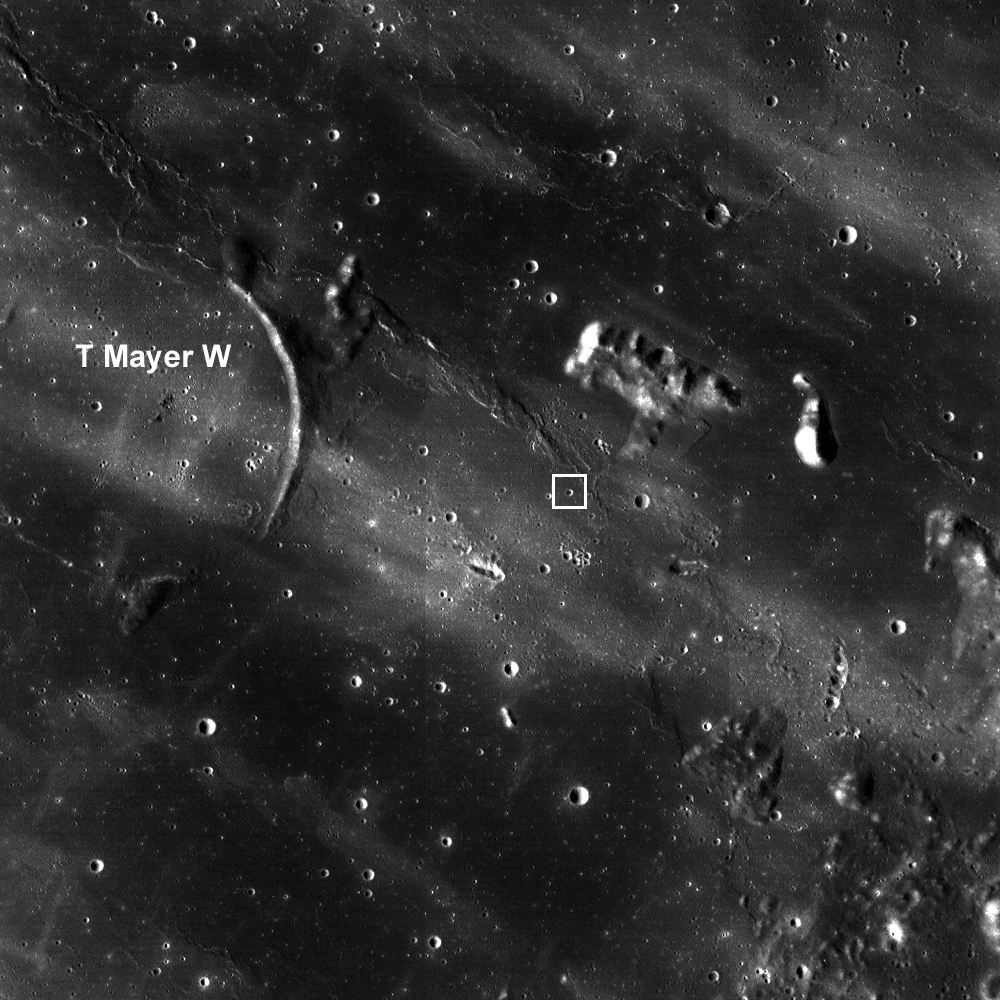
A crater (located at 17.331°N, 326.544°E) is almost entirely submerged by mare basalt. The remains of the crater indicate that the original crater was about 650-700 meters in diameter. Along the interior crater wall there are materials of different reflectance: high reflectance where boulders cover the crater wall, and low reflectance where mare basalt has flowed down the wall. The relatively low incidence angle of this image, ~18°, makes it easier to see differences in the reflectance of materials. The mare basalt flows filled the crater interior and left a mantle of mare material on the walls. It is unclear if the boulders are from the original crater wall, or if they are boulders from the basalt flow created as the edges of the flow erode away.
Even when mare basalt flows completely submerge a crater evidence of the crater rim can persist. These are called ghost craters and you can read more about them here!
The crater in the Feature Image is east of another mostly submerged crater, T Mayer W (see the WAC context image below). The eastern rim of T Mayer W is the most prominent section above the mare basalt flows. Areas of high reflectance in the WAC context image are actually rays of ejecta from the crater Copernicus, which is more than 470 km away. These rays are an excellent example of how impact processes can effect the geologic context of a site even from a great distance.
Explore the entire LROC NAC!
Related Images:
The Ghosts of Mare Fecunditatis
Ghost Crater in Southern Mare Crisium
Published by Sarah Braden on 24 January 2013
